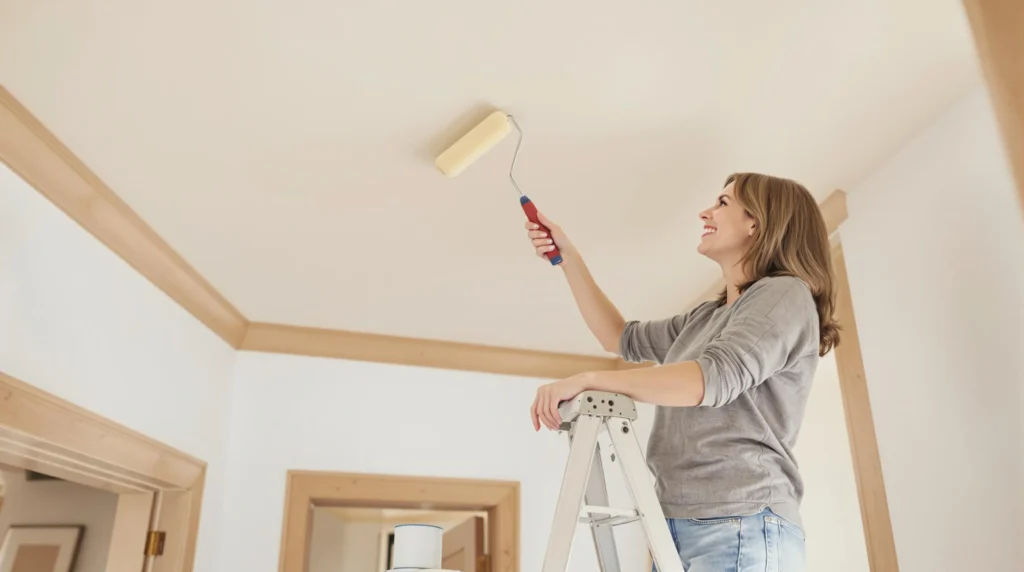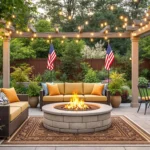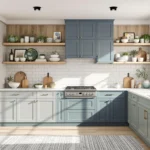Choosing the right paint for your ceiling can make or break your entire room’s aesthetic. We’ve all stared up at those unsightly drips streaks or uneven coverage that screams amateur DIY project. The wrong paint choice doesn’t just look bad – it can lead to premature peeling cracking and costly do-overs.
The ceiling paint market offers dozens of options but not all paints are created equal. Factors like sheen level coverage quality and durability separate the winners from the disasters waiting to happen. We’ve tested the top ceiling paints to help you avoid the common pitfalls that plague most homeowners.
Whether you’re dealing with textured surfaces water stains or simply want that perfect flat finish that hides imperfections we’ll guide you to the best paint options. Our comprehensive analysis covers everything from budget-friendly choices to premium formulations that professional painters swear by.
Choose the Right Paint Type for Your Ceiling Project
Selecting the proper paint type determines both the appearance and longevity of your ceiling project. Different sheens offer unique benefits that match exact room requirements and maintenance preferences.
Flat Paint for a Classic Matte Finish
Flat paint delivers the most popular choice for ceiling applications due to its ability to hide surface imperfections effectively. We recommend this finish for living rooms, bedrooms, and dining areas where moisture levels remain low. The matte surface absorbs light rather than reflecting it, creating a smooth appearance that conceals minor cracks and texture variations.
Coverage proves excellent with flat paints, often requiring fewer coats to achieve uniform color. Professional painters frequently choose flat finishes because they provide forgiving application properties and blend easily during touch ups. But, cleaning becomes more challenging since flat surfaces can absorb stains and show marks from scrubbing.
Eggshell Paint for Subtle Sheen and Easy Cleaning
Eggshell finishes offer a compromise between flat and satin paints, providing minimal sheen while maintaining cleanability. We suggest this option for hallways, home offices, and family rooms where occasional cleaning becomes necessary. The slight luster reflects just enough light to create visual interest without highlighting ceiling imperfections significantly.
Durability improves compared to flat paint, making eggshell suitable for areas with moderate traffic or where children might throw toys. Cleaning requires only mild soap and water, though aggressive scrubbing can still damage the finish. This paint type works well in homes with pets or smokers where ceiling surfaces need periodic washing.
Satin Paint for High Moisture Areas
Satin paint provides the highest durability and moisture resistance among ceiling paint options, making it ideal for bathrooms, kitchens, and laundry rooms. We recommend satin finishes where humidity levels fluctuate regularly or steam exposure occurs frequently. The increased sheen reflects more light, which can highlight surface imperfections but offers superior washability.
Mold and mildew resistance improves significantly with satin paints, protecting your investment in high humidity environments. Professional contractors often specify satin finishes for commercial kitchens and medical facilities where frequent cleaning with disinfectants becomes necessary. Application requires more skill since brush marks and lap lines show more readily on the glossier surface.
Consider Essential Paint Features for Ceiling Applications

Now that we’ve explored different paint types, let’s examine the exact features that make certain ceiling paints stand out from standard wall paints.
Low-Splatter Formulas to Minimize Mess
Benjamin Moore Waterborne Ceiling Paint leads our recommendations with its exceptionally thick formula that dramatically reduces splatter during application. We’ve found this paint particularly effective for ceilings with surface imperfections, as the thicker consistency helps minimize drips and mess.
Valspar’s Color-Changing Ceiling Paint offers an innovative approach to splatter control through its unique color-changing technology. This feature helps us track painted areas more effectively, reducing the likelihood of missed spots that often lead to additional dripping and mess.
Standard wall paints typically create more splatter when applied overhead due to their thinner consistency. Ceiling-exact formulas address this challenge by incorporating thicker viscosity that clings better to rollers and brushes.
Quick-Drying Properties for Faster Project Completion
Benjamin Moore Waterborne Ceiling Paint excels in drying efficiency, reaching touch-dry status in just 1 hour and allowing recoating within 1-2 hours. This rapid drying capability significantly reduces project time and minimizes the risk of dust settling on wet paint.
Benjamin Moore Muresco Ceiling Paint offers similar quick-drying benefits with a 1-hour touch time and 2-hour recoat window. We recommend these fast-drying options for busy households where extended drying times aren’t practical.
Quick-drying formulas prevent common ceiling painting problems like lap marks and brush strokes that occur when paint takes too long to level out. These properties also reduce the likelihood of debris sticking to wet surfaces.
High Hide Coverage to Reduce Multiple Coats
Benjamin Moore Waterborne Ceiling Paint provides excellent hide coverage through its thick, high-opacity formula that effectively conceals underlying colors and stains in fewer coats. We’ve consistently achieved superior coverage with this paint compared to standard options.
Sherwin Williams Eminence Ceiling Paint features integrated primer technology that delivers smooth application and effective coverage in a single product. This combination approach eliminates the need for separate primer coats in most situations.
High hide coverage becomes particularly important when painting over dark colors, water stains, or textured surfaces. Premium ceiling paints typically contain higher concentrations of titanium dioxide and other opacity-improving pigments that deliver better coverage per coat.
Select Premium Water-Based Latex Paints for Durability
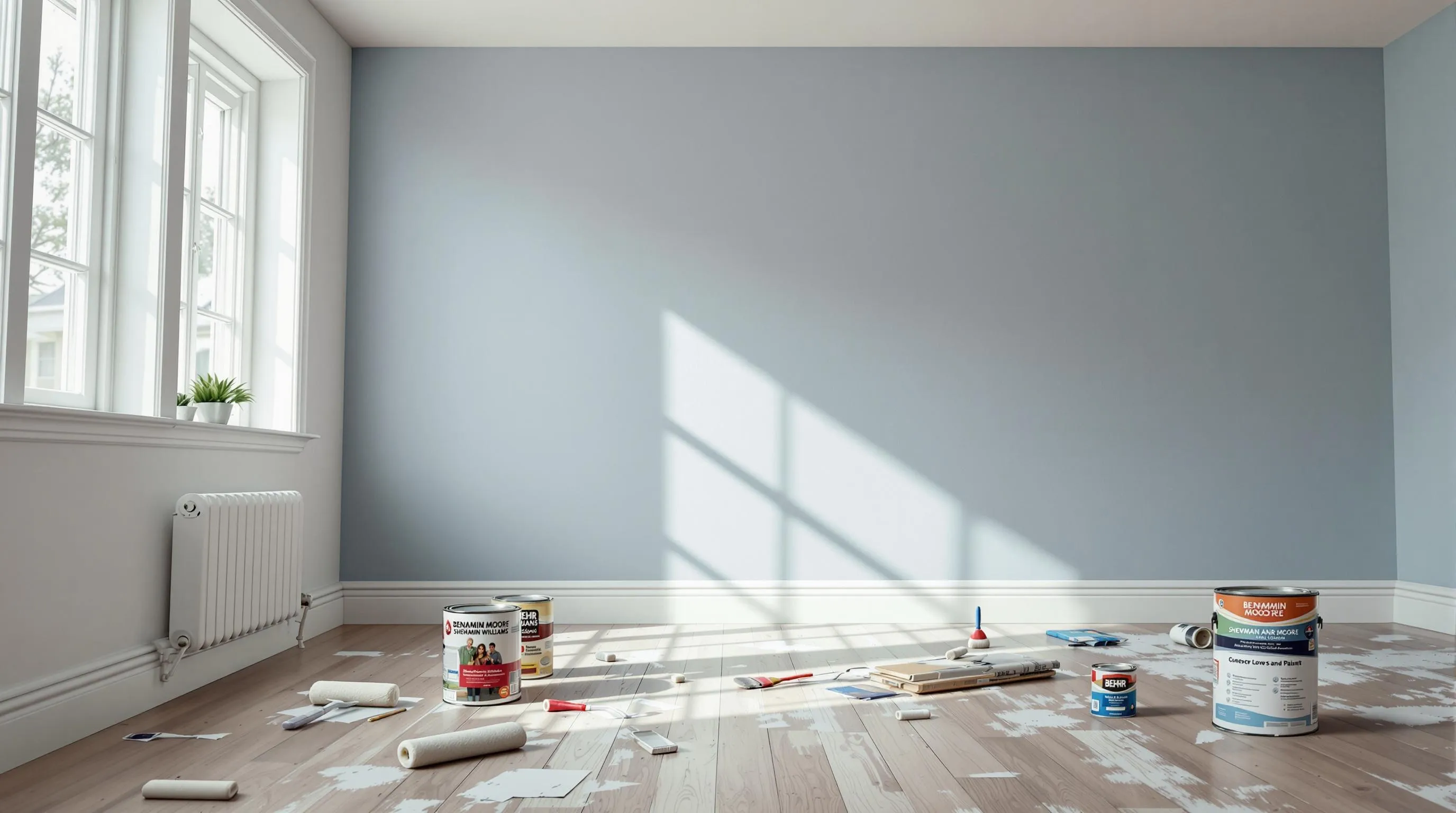
Water-based latex paints deliver exceptional performance for ceiling applications, combining easy cleanup with long-lasting results. We’ve identified three premium options that consistently outperform standard paints in durability testing.
Benjamin Moore Waterborne Ceiling Paint
Benjamin Moore Waterborne Ceiling Paint stands as our top recommendation for homeowners seeking professional-grade results. This acrylic latex formula provides one-coat coverage on most surfaces, including drywall, plaster, and bare wood. We appreciate its ultra-flat sheen that eliminates glare while maintaining a sophisticated appearance.
Splatter-resistant technology makes application significantly easier compared to traditional ceiling paints. Mildew resistance ensures long-lasting performance in humid environments like bathrooms and kitchens. The water-based composition allows for quick cleanup with soap and water, reducing project time and hassle.
Sherwin-Williams ProClassic Interior Waterbased Acrylic-Alkyd
Sherwin-Williams ProClassic combines the benefits of acrylic and alkyd technologies in a single water-based formula. This unique blend delivers exceptional durability that rivals oil-based paints while maintaining the convenience of latex cleanup. We’ve found this paint creates an exceptionally smooth finish that enhances ceiling appearance.
Professional contractors frequently choose this option for its superior leveling properties and extended working time. The acrylic-alkyd composition provides excellent adhesion to various surfaces without requiring additional primer in most applications. Application remains consistent across different tools, from rollers to spray equipment.
Behr Premium Plus Ultra Interior Paint
Behr Premium Plus Ultra offers impressive value with its paint and primer combination formula. This water-based latex paint achieves one-coat coverage while providing built-in primer protection. We recommend this option for homeowners tackling multiple ceiling projects due to its cost-effective performance.
Mildew resistance makes this paint suitable for high-moisture areas throughout the home. The flat sheen option minimizes surface imperfections while creating a uniform appearance across large ceiling areas. Easy application and cleanup appeal to DIY enthusiasts who want professional results without complex preparation requirements.
Explore Specialized Ceiling Paint Formulations
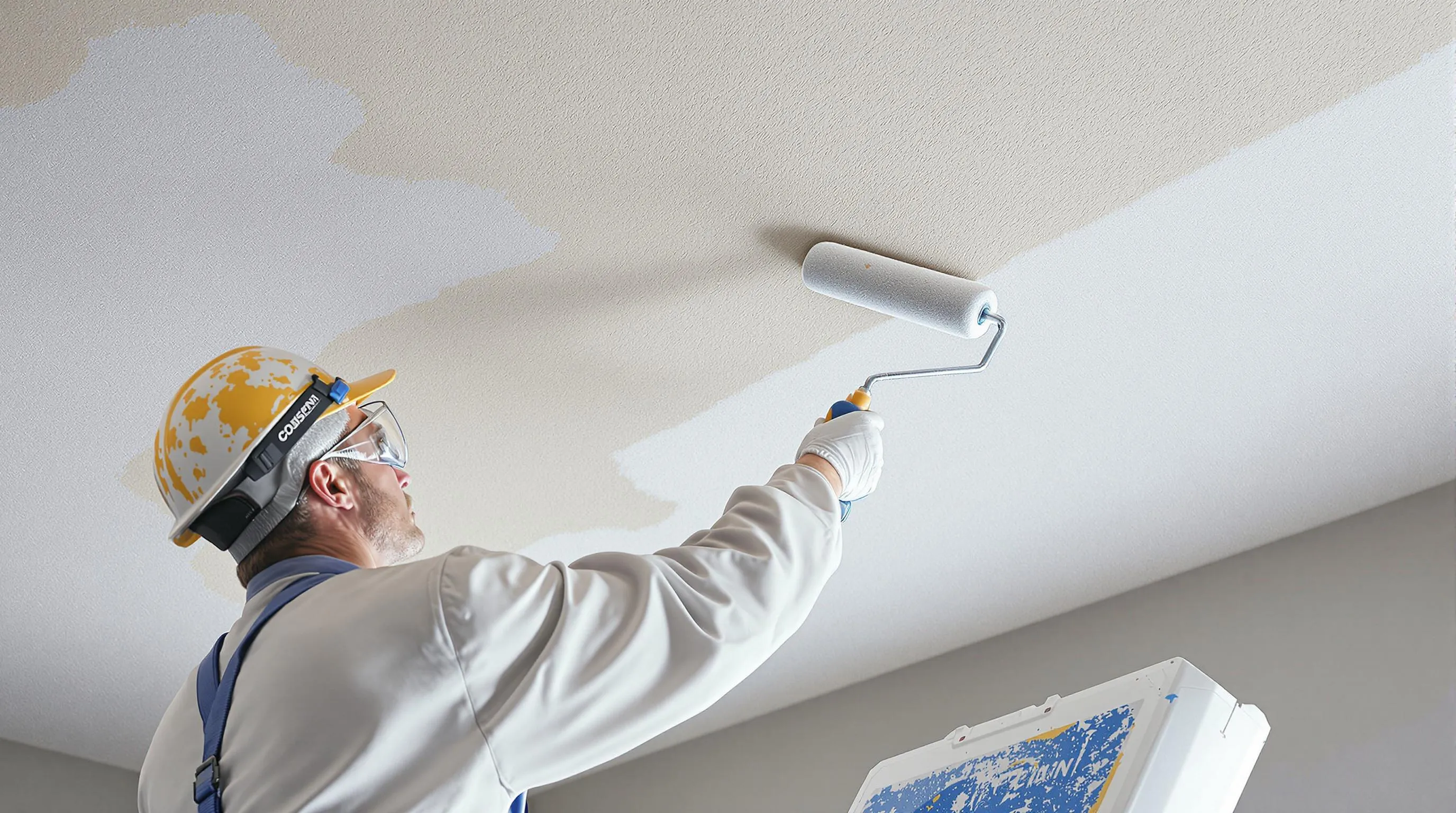
Beyond standard ceiling paints, we’ve discovered that specialized formulations address unique challenges and environments. These advanced paints offer targeted answers for exact ceiling types and room conditions.
Acoustic Ceiling Paint for Textured Surfaces
Textured ceilings require specialized paint formulations that preserve their sound-absorbing properties while delivering excellent coverage. We recommend acoustic ceiling paints specifically designed for popcorn, stippled, and other textured surfaces. These paints maintain the texture’s acoustic benefits while providing a smooth, uniform appearance.
Professional-grade acoustic paints contain special binders that penetrate deeply into textured surfaces without filling in the sound-dampening grooves. They’re formulated to work with the ceiling’s existing texture rather than against it. Most acoustic ceiling paints dry to a flat finish that reduces echo and sound transmission between rooms.
Primer and Paint Combinations for One-Coat Coverage
One-coat ceiling paints with integrated primers save important time and effort during application. Benjamin Moore Waterborne Ceiling Paint and Sherwin-Williams Eminence Ceiling Paint lead our recommendations for these time-saving formulations. These products combine high-quality primer and paint in a single application.
Built-in primer technology eliminates the need for separate priming steps while ensuring excellent adhesion and coverage. We’ve found these combination products particularly effective over previously painted surfaces and new drywall. They provide superior hide coverage that blocks stains and previous colors without requiring multiple coats.
The integrated primer formulations also enhance paint durability and reduce the likelihood of peeling or flaking over time. Most combination products offer excellent coverage rates, typically covering 350-400 square feet per gallon depending on surface texture.
Anti-Microbial Paints for Bathrooms and Kitchens
Humid environments like bathrooms and kitchens benefit significantly from anti-microbial ceiling paint formulations. These specialized paints contain additives that actively inhibit mold and mildew growth, making them essential for moisture-prone areas. We’ve observed that anti-microbial paints maintain their protective properties for years after application.
The additives in these paints create an inhospitable environment for fungal growth without compromising paint performance or appearance. They work continuously to prevent mold spores from establishing colonies on ceiling surfaces. Most anti-microbial formulations also resist moisture penetration, providing an additional barrier against humidity damage.
These paints typically feature enhanced scrub resistance, allowing for easier cleaning when necessary. They maintain their protective properties even after repeated washing, making them ideal for high-humidity spaces where regular maintenance is required.
Factor in Color Options Beyond Traditional White
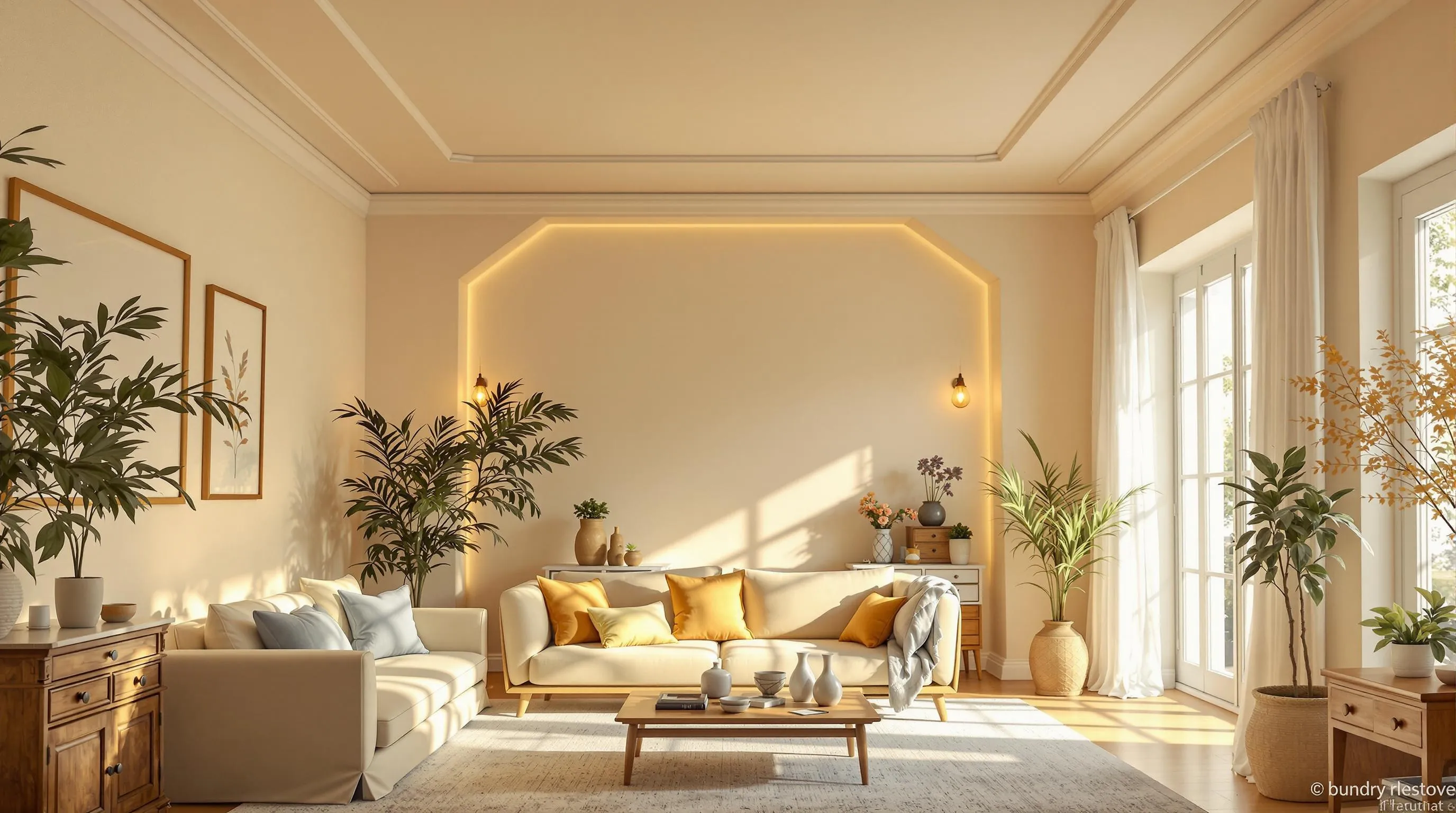
While white remains the most popular ceiling choice, we’ve discovered that exploring alternative colors can dramatically transform your room’s atmosphere and visual appeal.
Off-White Shades to Add Warmth
Off-white shades create a cozy atmosphere that pure white simply can’t match. We recommend Moonlight White for homeowners seeking a warmer tone than standard ceiling white, as it provides subtle warmth without overwhelming the space. These gentle variations work exceptionally well in bedrooms and living areas where you want to create an inviting environment.
Cream and ivory tones complement existing wall colors beautifully, creating a cohesive look throughout your room. We’ve found that off-white shades particularly enhance rooms with wooden furniture or warm-toned decor elements. The subtle warmth these colors provide makes spaces feel more intimate while maintaining the brightness benefits of lighter ceiling colors.
Light Colors to Enhance Room Brightness
Light colors beyond white can make your rooms feel significantly larger and more expansive. Whitened Sage by Behr offers a calming effect that works perfectly in bathrooms and bedrooms, creating a spa-like atmosphere while maintaining excellent light reflection properties.
Light blues and greens excel at creating the illusion of height and space in smaller rooms. We’ve observed that these colors work particularly well in rooms with limited natural light, as they reflect artificial lighting effectively while adding visual interest. Smoke from Benjamin Moore creates a calming ambiance that echoes a clear sky, making it an excellent choice for bedrooms and meditation spaces.
Monochromatic approaches using the same light color on both walls and ceilings simplify your paint job while creating a cohesive appearance. This technique works especially well in powder rooms and smaller spaces where you want to maximize the feeling of openness.
Bold Colors for Statement Ceilings
Bold ceiling colors can transform any room into a dramatic focal point that reflects your personal style. Dark colors work exceptionally well in cozy rooms, where they complement natural wood elements and create a rich, enveloping atmosphere that feels both sophisticated and intimate.
Navy blues and deep greens create stunning contrast when paired with lighter wall colors, drawing the eye upward and adding architectural interest to plain rooms. We’ve seen remarkable results when homeowners use bold colors in dining rooms and home offices, where the dramatic effect enhances the room’s intended purpose.
Deep jewel tones like emerald or sapphire work particularly well in rooms with high ceilings, where the bold color won’t feel overwhelming. These statement colors pair beautifully with metallic fixtures and create an upscale atmosphere that rivals professional interior design.
Evaluate Budget-Friendly Paint Options Without Sacrificing Quality

Finding affordable ceiling paint that delivers professional results doesn’t require compromising on quality. We’ve identified three standout options that prove excellent ceiling coverage and durability can come at accessible price points.
Home Depot Behr Marquee Interior Paint
Behr Marquee Interior Paint stands out as our top mid-range choice for budget-conscious homeowners seeking premium performance. This advanced acrylic formula combines primer and stain-blocking properties in one product, eliminating the need for multiple coats and saving both time and money. Coverage capabilities exceed expectations with this paint, often requiring just one coat for complete ceiling transformation.
Antimicrobial and mildew-resistant properties make Behr Marquee particularly valuable for bathrooms, kitchens, and basements where moisture concerns arise. The flat finish effectively hides ceiling imperfections while providing long-lasting durability that justifies the investment. Application proves smooth and forgiving, making it suitable for DIY enthusiasts tackling their first ceiling project.
Lowe’s Valspar Signature Interior Paint
Valspar Signature Interior Paint delivers exceptional value in the affordable paint category without sacrificing professional-quality results. Excellent coverage capabilities allow this paint to hide imperfections effectively while providing a uniform, smooth finish across the entire ceiling surface. The low sheen finish creates the perfect matte appearance that ceiling applications demand.
Low-VOC formula ensures safer indoor air quality during and after application, making it ideal for bedrooms and living spaces where family members spend considerable time. Competitive pricing makes Valspar Signature accessible for larger ceiling projects, including whole-home renovations. Users consistently report satisfaction with the paint’s ability to provide consistent coverage without streaking or lap marks.
Walmart Great Value Interior Paint
Great Value Interior Paint targets the lowest price point while still delivering adequate performance for basic ceiling applications. Budget-conscious homeowners appreciate this option for covering large areas without breaking their renovation budget. While multiple coats may be necessary compared to premium brands, the final results remain acceptable for most residential applications.
Quality proves sufficient for low-traffic areas, guest rooms, or basement ceilings where perfect sheen consistency isn’t critical. Coverage capabilities meet basic standards, though proper surface preparation becomes more important with this budget option. The paint works best when applied over properly primed surfaces and when time constraints allow for additional coats if needed.
Prepare Your Ceiling Surface for Best Paint Results

Proper surface preparation determines whether your ceiling paint job delivers professional results or becomes a disappointing mess. We’ve found that taking time to prepare your ceiling properly can mean the difference between one-coat coverage and multiple touch-ups.
Cleaning and Priming Techniques
Start by removing all dust, dirt, and grease from your ceiling surface using a damp cloth or sponge. Cobwebs and accumulated grime can prevent paint from adhering properly, leading to uneven coverage and potential peeling later.
Apply a high-quality primer when you’re painting over stains, dark colors, or previously unpainted surfaces. Benjamin Moore Waterborne Ceiling Paint works exceptionally well over properly primed surfaces, providing the superior coverage we mentioned earlier.
Use a degreasing cleaner in kitchens and bathrooms where cooking residue or moisture might have affected the ceiling. Allow the surface to dry completely before proceeding with primer application.
Roll primer in the same direction you’ll apply your finish coat to ensure consistent texture. We recommend waiting at least 2-4 hours between primer and paint application for optimal adhesion.
Repairing Cracks and Imperfections
Fill hairline cracks with spackling compound using a putty knife, spreading it slightly wider than the crack itself. Small holes from nails or screws need the same treatment to prevent them from showing through your new paint.
Sand all repaired areas smooth once the spackling compound has dried completely, typically within 24 hours. Rough patches will telegraph through even the best ceiling paints, including premium options like Tikkurila Anti-Reflex 2 (AR2).
Apply joint compound to larger gaps or areas where drywall meets molding, feathering the edges to blend seamlessly with the surrounding surface. This step is crucial when using flat finish paints that can highlight imperfections.
Spot prime any repaired areas before applying your finish coat to ensure uniform sheen and coverage. We’ve seen too many projects fail because homeowners skipped this essential step.
Proper Ventilation and Safety Measures
Open windows and use fans to create cross ventilation throughout your workspace, reducing paint fumes and accelerating drying time. Poor ventilation can extend drying times and create health hazards during your project.
Wear a dust mask when sanding and safety goggles to protect your eyes from falling debris. Ceiling work naturally creates more airborne particles than wall painting.
Use a sturdy ladder or scaffolding that keeps you at a comfortable working height without overreaching. We recommend positioning yourself so you can easily reach a 4-foot section without moving the ladder.
Protect floors and furniture with plastic sheeting or drop cloths, securing edges with painter’s tape. Even low-splatter formulas like Benjamin Moore Waterborne Ceiling Paint can drip when applied overhead.
Remove or cover light fixtures and ceiling fans to prevent paint splatters on electrical components. Turn off power to the room at the circuit breaker for additional safety when working around electrical fixtures.
Apply Paint Using Professional Techniques

We’ll share the application methods that professional painters use to achieve flawless ceiling finishes. These techniques ensure even coverage and eliminate common issues like streaks and lap marks.
Roller Selection for Smooth Application
18-inch rollers transform large ceiling projects by covering more surface area with each pass. We recommend using these wide rollers for rooms over 100 square feet to significantly reduce application time. Rolling parallel to the main light source prevents visible roller lines and creates a uniform appearance.
Nap length selection determines texture quality for different ceiling surfaces. We suggest 3/8-inch nap rollers for smooth drywall ceilings and 1/2-inch nap for slightly textured surfaces. Extension poles eliminate the need for constant ladder repositioning and provide better control during application.
High-quality roller covers prevent fiber shedding that can ruin a smooth finish. We use synthetic covers with premium paints like Benjamin Moore Waterborne Ceiling Paint to achieve professional results. Microfiber rollers work exceptionally well with low-splatter formulas.
Brush Work for Edges and Detail Areas
Angled brushes create precise edge lines where ceilings meet walls and trim. We use 2.5-inch angled brushes for cutting in around ceiling fixtures and architectural details. Brush work requires steady hands and proper technique to avoid visible brush marks.
Quality brush selection affects final appearance more than most homeowners realize. We choose natural bristle brushes for oil-based paints and synthetic brushes for water-based ceiling paints. Purdy and Wooster brushes maintain their shape better during extended use.
Proper loading technique prevents drips and runs that commonly occur during ceiling work. We dip brushes only one-third into the paint and tap against the container edge rather than wiping. This method ensures adequate paint volume while maintaining control.
Multiple Coat Application Strategies
Two-coat systems provide superior coverage even with high-quality paints like Sherwin-Williams Eminence Ceiling Paint. We apply the first coat in one direction and the second coat perpendicular to eliminate any missed spots. Professional painters never rely on single-coat coverage for critical areas.
Drying time between coats affects adhesion quality and overall durability. We wait a minimum of four hours between coats with latex ceiling paints and check manufacturer specifications for optimal recoat windows. Benjamin Moore Waterborne Ceiling Paint typically requires 2-4 hours between applications.
Inspection lighting reveals imperfections that aren’t visible during application. We use portable LED work lights positioned at different angles to identify thin spots or missed areas before applying subsequent coats. This technique ensures complete coverage and professional-quality results.
Conclusion
Choosing the right ceiling paint transforms your space from ordinary to extraordinary. We’ve covered everything from premium options like Benjamin Moore Waterborne to budget-friendly choices that deliver impressive results without very costly.
Remember that proper preparation and application techniques make all the difference. Whether you’re working with textured surfaces or exploring bold color choices beyond traditional white your success depends on matching the right paint formula to your exact needs.
The investment in quality ceiling paint pays dividends through improved durability easier maintenance and professional-looking results. With the knowledge we’ve shared you’re equipped to tackle your next ceiling project with confidence and achieve the flawless finish your room deserves.
Frequently Asked Questions
What type of paint is best for ceilings?
Flat paint is typically the best choice for most ceilings because it hides imperfections and provides a smooth, matte finish. For high-moisture areas like bathrooms and kitchens, satin paint offers better durability and mold resistance. Eggshell paint works well as a middle ground, providing subtle sheen and easier cleanability for hallways and family rooms.
Should I use ceiling paint or regular wall paint on my ceiling?
Ceiling paint is specifically formulated for overhead application with features like low-splatter formulas, quick-drying properties, and high hide coverage. These specialized paints minimize mess, reduce dripping, and provide better coverage than regular wall paint, making them worth the investment for ceiling projects.
What are the benefits of one-coat ceiling paints?
One-coat ceiling paints combine paint and primer, saving time and effort during application. They provide excellent coverage in a single application, eliminate the need for separate priming, and help achieve consistent results. Popular options include Benjamin Moore Waterborne Ceiling Paint and Sherwin-Williams Eminence Ceiling Paint.
Can I paint my ceiling a color other than white?
Yes, colored ceilings can dramatically transform a room’s atmosphere. Consider off-white shades like Moonlight White for warmth, cream and ivory for cohesion, or light colors like Whitened Sage to enhance brightness. Bold colors such as deep jewel tones or navy blue can create dramatic focal points in appropriate spaces.
What’s the difference between flat, eggshell, and satin paint for ceilings?
Flat paint offers a matte finish that hides imperfections but is harder to clean. Eggshell provides subtle sheen and easier maintenance, making it suitable for high-traffic areas. Satin paint offers excellent durability and moisture resistance for bathrooms and kitchens but requires more skill to apply due to its reflective properties.
How important is surface preparation before painting ceilings?
Surface preparation is crucial for achieving professional results. This includes cleaning away dust and grease, applying high-quality primer, and repairing cracks and imperfections. Proper preparation ensures smooth finishes, better paint adhesion, and longer-lasting results. Don’t skip this step for the best outcome.
What are the best budget-friendly ceiling paint options?
Three excellent budget options include Behr Marquee Interior Paint (combines primer and stain-blocking), Valspar Signature Interior Paint (low-VOC formula with professional results), and Walmart Great Value Interior Paint (adequate performance at the lowest price point). These options provide quality without breaking the budget.
Do I need special tools for painting ceilings?
Yes, use 18-inch rollers for large projects and select appropriate nap length for your ceiling texture. High-quality roller covers and angled brushes for edge work are essential. Proper tools prevent streaking, ensure even coverage, and make the job easier and more professional-looking.
What safety measures should I take when painting ceilings?
Ensure proper ventilation during painting, wear protective gear including safety glasses and masks, and secure your workspace to prevent accidents. Use stable ladders or scaffolding, and take frequent breaks to avoid neck strain. Safety should always be your top priority during ceiling painting projects.
How long should I wait between coats when painting ceilings?
Follow manufacturer recommendations for drying times, typically 2-4 hours between coats for water-based paints. Quick-drying formulas like Benjamin Moore Waterborne Ceiling Paint may allow shorter intervals. Proper drying prevents lap marks, ensures good adhesion, and delivers the best final appearance.

